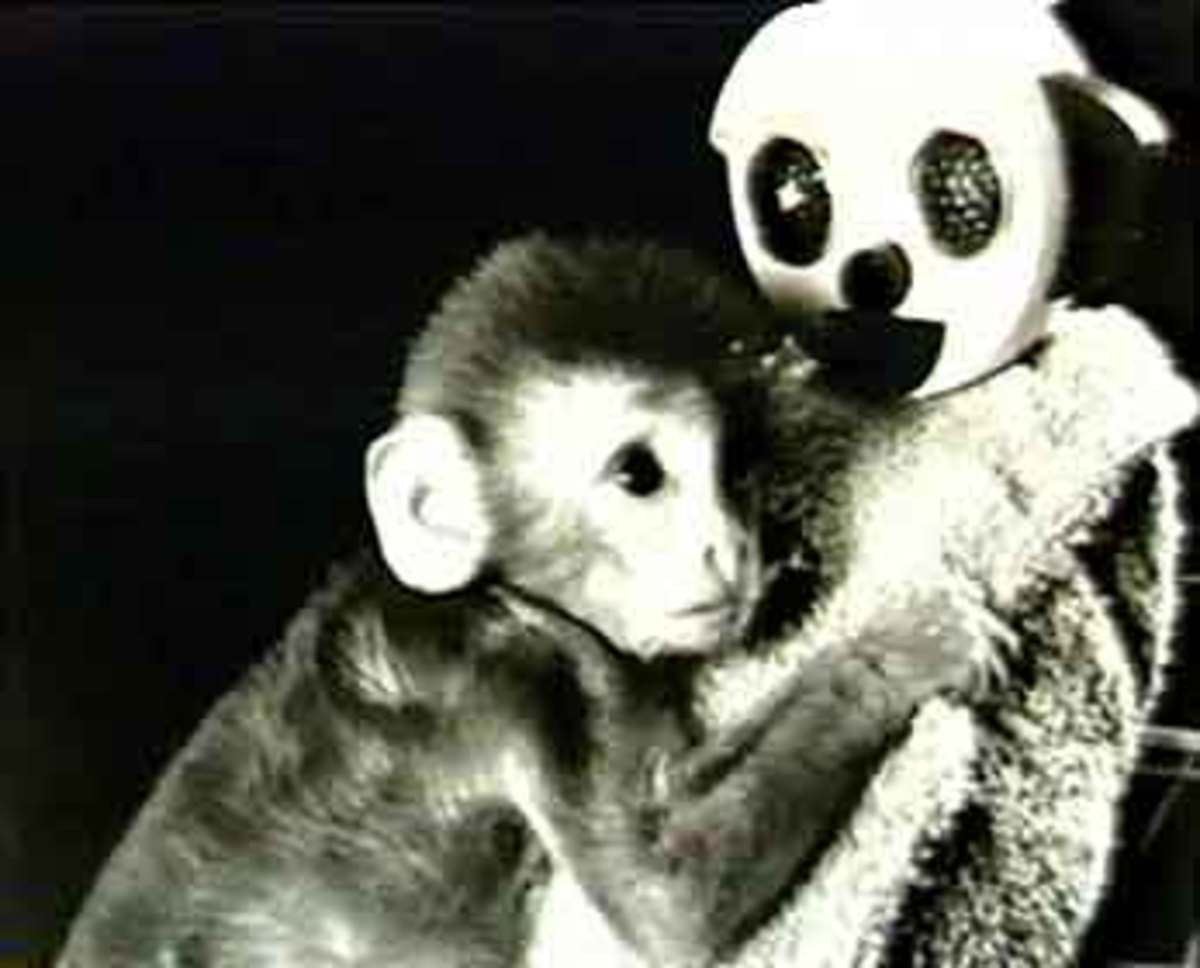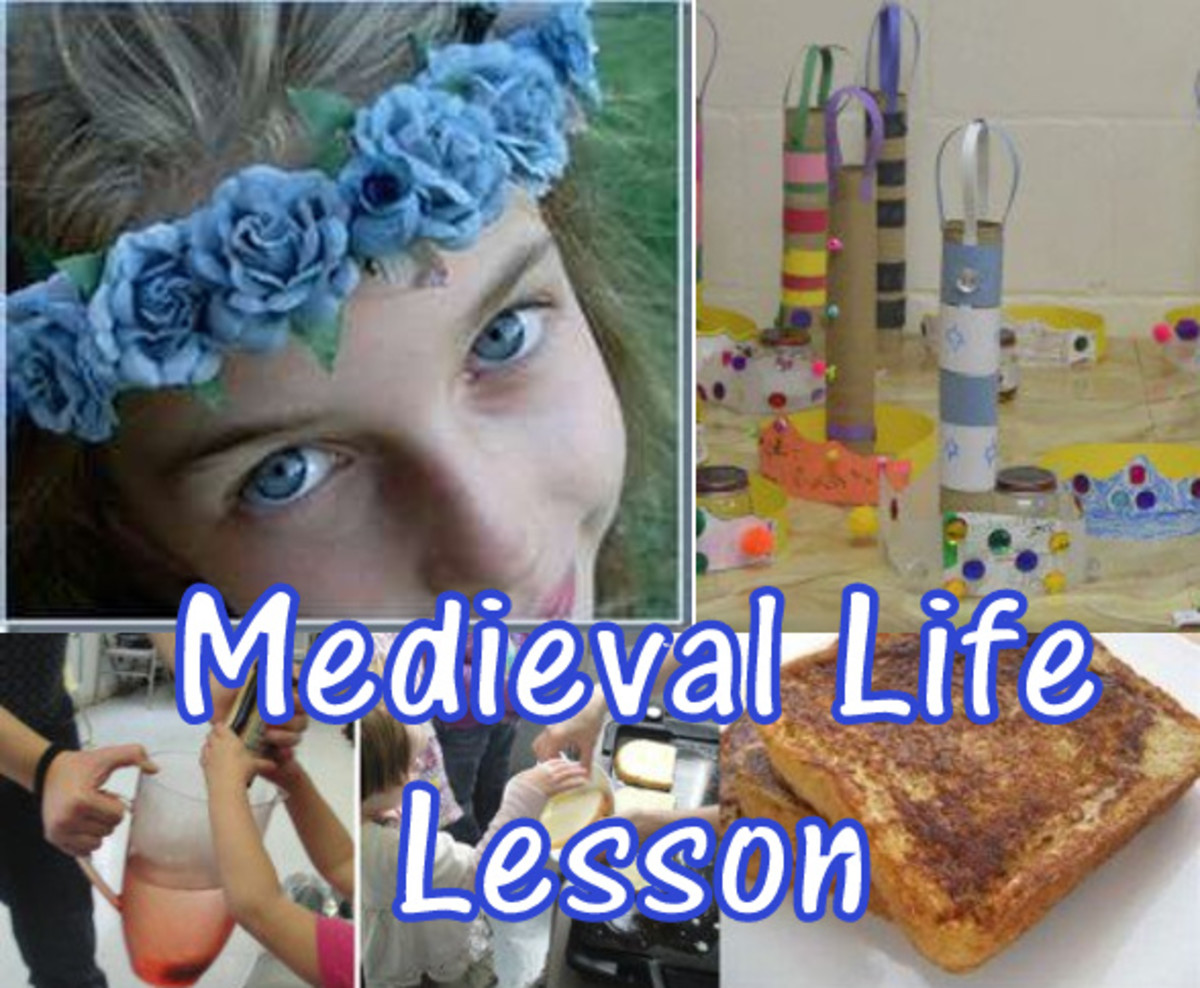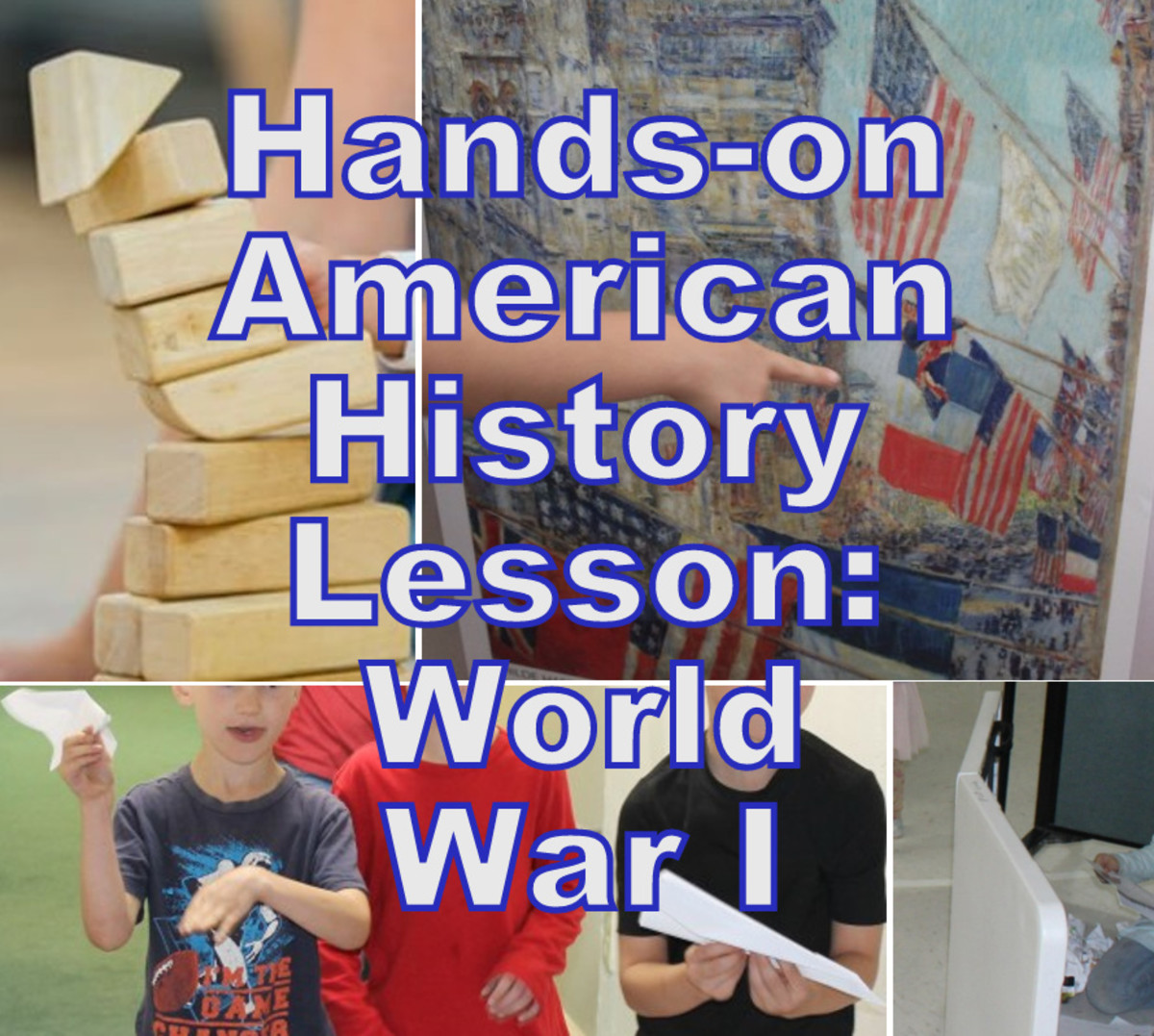- HubPages»
- Education and Science»
- Teaching»
- Lesson Plans
Story Vocab, Point of View, and Theme Elementary School Sample Lesson Plan
Theme
Theme is a universal idea or message that stretches through an entire story.
Common Themes
- Friendship
- Growing Up
- Conquering Fears
Synonyms
Synonyms are words that are similar or have a related meaning to another word.
Examples of Synonyms
- Shy
- Quiet
- Pretty
- Beautiful
- Kind
- Nice

Antonyms
A word opposite in meaning to another.
Examples of Antonyms
- Good
- Bad
- Hot
- Cold
- Soft
- Hard
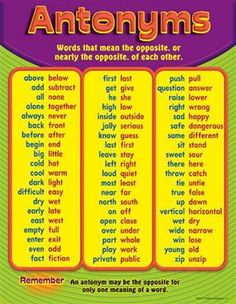
Plot
The pattern of events in a narrative, drama, or story.
Point of View
The perspective from which the narrator tells the story.
Point of View: Third person
Ted plays on a baseball team. He loves to play with his team. He has a game next week. His coach thinks he's a good baseball player.
Point of View: First person
I walked home from school today with my friends. We stopped for ice cream. I had vanilla. It's my favorite.
Point of View: Second person
As you walk up the hill, you realize that the atmosphere's just too quiet. There's no sound from the cardinal you know is almost always singing from the top of the maple tree.
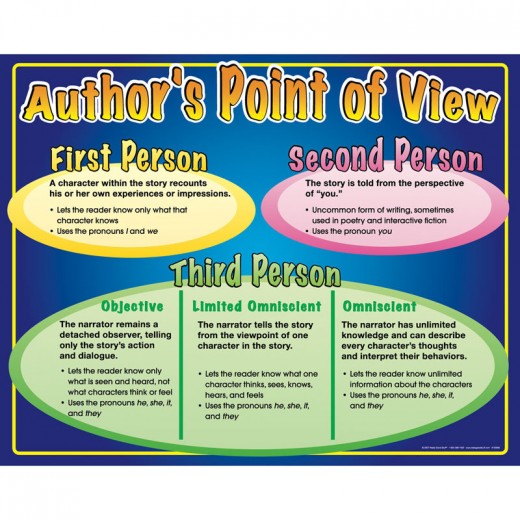
Points of View
POV
| First Person
| Second Person
| Third Person
|
|---|---|---|---|
Narrator
| A character in the story is the narrator
| The narrator tells the story to another character.
| The narrator is an outside observer.
|
Pronouns
| I ,me, and we
| You, your, and yours
| He, she, and they
|
Fourth Grade Story Vocab and Point of View Notes Sheet
Theme- _________________________________________________
__________________________________________________________
Common Themes
- __________________
- ___________________
- ____________________
Synonyms- ________________________________________________
_________________________________________________________
Examples of Synonyms
- Shy
- __________
- Pretty
- __________
- Kind
- __________
Antonyms-_________________________________________________________
_________________________________________________________________
Examples of Antonyms
- Good
- ____________
- Hot
- _____________
- Soft
- _____________
Plot-___________________________________________________________________________________________________________________________
Point of View-_____________________________________________________
__________________________________________________________________
POV: Narrator and Pronouns
1st Person-
2nd Person-
3rd Person-
Example of: ______________________________
Ted plays on a baseball team. He loves to play with his team. He has a game next week. His coach thinks he's a good baseball player.
Example of: ______________________________
I walked home from school today with my friends. We stopped for ice cream. I had vanilla. It's my favorite.
Example of: ______________________________
As you walk up the hill, you realize that the atmosphere's just too quiet. There's no sound from the cardinal you know is almost always singing from the top of the maple tree.
Early Personality and Socioemotional Development in the Context of Close Relationships: Ross Thompson
"1. How did you become interested in psychology?
>>Well I became a psychologist because I was captivated by the psychology courses I had taken as an undergraduate and I thought I could aspire to nothing more than to be a great college professor teaching the same thing. And I went into developmental psychology because I think that understanding how people come to be the way they are is one of the secrets to understanding psychology.
2. What is your current area of research?
>>Well I studied parent-child relationships early in life; it's the reason I went into developmental psychology. And in studying parent-child relationships, I'm particularly interested in how these relationships provide the gateway for children to understand who they are, to understand what other people are like, and to begin to comprehend the psychological forces that draw people to each other and that help them to get along. So I look at the impact of relationships and of parent-child attachments on developing emotion understanding, on conscious development, on children's knowledge of themselves, and on their developing skills in emotion regulation.
3. Please explain the concept of “attachment” and the various attachment patterns that are seen in infants and young children.
>> Well attachment is a term that psychologists use to describe close emotional ties that infants and young children develop to those who care for them regularly. We believe that these attachments are as biologically basic as is the motivation to walk and to learn to speak, that they confer on young children's experience and sense of security and self confidence, and that enables them to go out and explore the world, and to benefit from those experiences.
4. Do all attachments lead to emotional security?
>> Although virtually all children form attachments to their caregivers, not all of those attachments are secure. Fortunately, in most cases infants do form secure attachments that confer confidence and security. But in some cases children develop insecure attachments, and there are several varieties of those, ranging from avoidantly insecure attachments, where infants and young children seem to be almost precociously independent to what we might call ambivalently insecure attachments, where children seem to have difficulty finding security in the -- in the parents' presence, to a more disturbing form of insecure attachments that we call disorganized, where children seem to lack a competent strategy for deriving emotional security from their interactions with their caregivers. And in each case we worry about the consequences of a secure -- of an insecure early attachment for the child's later social and emotional development.
5. What is the difference between an attachment and a relationship?
>> Well children have relationships of all kinds, of course. But it is those caregivers who are most reliably involved in a child's life, especially in those situations where the child needs comfort and care, as when the child feels threatened or in danger. It is those caregivers to whom attachments develop. So as we're mapping a child's social world, we might expect that attachments would form most significantly to the child's parents, and to other regular caregivers, such as members of the extended family. We might develop -- we might -- we might expect that children would also develop close relationships with others -- perhaps secondary teachers at the childcare center, or in preschool, or members of the extended family who aren't as regularly involved in the child's care. But at the center point of a child's social world are those to whom attachment relationships have taken place.
6. Do infants and children tend to form one attachment to one special person, or do they form many special attachments?
>> We do believe that multiple attachments are typical in a young child's social world. And that's a good thing, because it gives children multiple opportunities to develop that sense of security and the set -- and the self confidence it derives from it. So attachments typically form to mothers, but also to fathers. Attachments may also form to a regular teacher to whom the child has developed an emotional tie in preschool or in childcare, as well as to other important figures in the child's world.
7. Does an attachment remain consistent and stable throughout early infancy and childhood? Or can certain elements influence an attachment?
>> We find that attachments can change over time, and that's as we might expect it to. There's no reason we would expect that a child who is initially formed a secure or insecure attachment is necessarily going to maintain that same quality of attachment, as caregiving circumstances change, as a child's life changes. And indeed what we do find is that attachments tend to change over time. If circumstances change in the child's experiences of care that might confer that, that kind of change in security. This means that children who perhaps begin as insecure can develop security. If caregivers are enabled to become more sensitive and more responsive to the child, and the child can reestablish that sense of trust.
8. What factors affect the security of an attachment?
>> Well, the research shows that the most significant factor predicting whether a child has a secure or insecure attachment is the sensitivity of the caregiver. And by sensitivity we're talking about the caregiver's ability to respond appropriately and helpfully to the child's needs and expressed concerns. One way that sensitivity has been described is as respect for the child. This is Bowlby's term for sensitivity and it really means that a caregiver has a capacity to see the world from the child's point of view and to response helpfully to the child especially when the child is in need or is feeling threatened or at risk.
9. Does a childcare environment during infancy threaten parental attachment? Can it affect the child’s security and adjustment later in life?
>> Generally speaking, research has shown that childcare does not threaten the security of attachments to parents. In other words, it's not as if a parent's attachment to a child is, is, is undermined by the child developing attachments to, to childcare workers or to preschool teachers. We do find that when children are in very low quality care, there can be threats to the child's later development. And so we worry about the fact that the general quality of childcare in the United States is, is generally poor to, to, to, to modest in, in quality, because it means that a lot of children are in care of circumstances that are not truly development enhancing for them.
10. How does attachment shape social development? Are certain traits or behaviors seen in children who have strong attachments?
>> Well, if that earliest relationship that a child develops with people in whom they put their trust is, is psychologically formative, it ought to be effecting how children see themselves, how they learn to interact with other people, how they think about relationships, and how they think about other people. And research testing those ideas has shown that attachments really are significant in those ways. We find that children who are in secure relationships, for example, also approach new relationships, particularly relationships involving trust and intimacy. They approach those relationships more competently. They tend to be more successful in establishing good, strong, early relationships with other people. We find that children in secure relationships have greater emotion understanding. They show advances in conscience development. They tend to have a more positive sense of who they are. Now, again, the extent to which those benefits endure depends on the maintenance of a secure attachment, so the children's caregiving circumstances become poor over time, we would not expect a lot of those benefits to endure. So the story that comes from the attachment research is that a parent's investment in the sensitive responding to a young child is important in the child developing a sense of security in that caregiver. But it's not just being sensitive when children are young that is important, that sensitivity has to be maintained in order for the benefits of the secure attachment to endure in the child's life.
11. Have cultural differences been observed regarding attachment?
>> There are cultural differences in attachment, and that's exactly as we would expect, given that cultural patterns of early care tend to vary a lot. Now, we don't think that children vary cross culturally in their needs for security. But we do believe that the ways in which parents show sensitive caregiving, the context in which this occurs, the numbers of caregivers who are involved in the child's life and their different roles are going to vary a lot cross culturally, as well as the outcomes of the secure attachment. Given that cultures try to encourage different qualities in children, we might expect that a secure attachment will be shown in certain ways for children growing up in western cultures that value competent functioning and, and independent initiative, and a secure attachment might be manifested in somewhat different ways and different cultures with different cultural needs and values.
12. Please describe the differences between Eastern and Western cultures regarding their interpretations of attachment.
>> Well, there have been studies, for example, that compare patterns of care in -- for mothers in the United States compared to mothers in Japan and we find as we would expect given our knowledge of these cultures. The Japanese mothers embrace a value of emotional intimacy with their child that causes them to maintain a lot of physical closeness to avoid separations from the child. In contrast, to many American families in which encouraging the child to boldly go off and explore on their own is a, is an important cultural value. So the ways in which sensitivity gets expressed by American mothers compared to those in Japan is going to be very different. Even though children in both cultures need to find a sense of security and trust in those who care for them.
13. How important are predictability and spontaneity in parents’ interactions with their infants?
>> One of the things that young infants are seeking in the world around them is a sense of predictability, is a sense of consistency, is knowing what's going to happen, particularly when important people come into view. And as a result, the parent's reliable responsiveness is an important ingredient to a secure attachment. Now, parents of course don't always behave all the same way, but to know that when I am in need, that when I am hurt, when I'm distressed, when I'm threatened, when I'm scared, I can count reliably on a helpful response from the people who matter to me, that's one of the important ingredients of a secure attachment.
14. What research findings have surprised you the most?
>> Well, our research was one of the first to find that attachments can change, even over short periods of time in infancy. At the time that I did this research, most of the other studies had been showing quite a bit of stability in attachment, and so at first, we doubted our findings, as we ought to. We rechecked our tapes, we reevaluated our, our conclusions, and came to the inescapable finding that attachments had changed for about half of our sample over a seven month period. What we came to understand was that these changes were occurring at the same time that changes were also occurring in the conditions of care, for those children's who's attachments changed. But that really rocked us and led to some rethinking of the nature of these relationships and how they're maintained over time, then I think [inaudible] important influence on attachment theory.
15. What direction do you see your research heading?
>> Well, I think one of the exciting advances in the study of parent child relationships has been the realization that the nurture and qualities of these relationships change as children mature, and as children's own needs change. So, our own research has shifted out of the infancy area into the preschool years, at a time when young children are striving to understand the psychological world that they share with other people. And we've discovered that secure attachments are an important gateway for children developing emotion understanding, for their developing a sense of the standards that [inaudible] a conscience, for their developing sense of who they are. In a sense, in early childhood, more than in infancy, children are exploring the psychological world, and we think that a secure or insecure attachment has a particularly formative influence on these advances at that time, that's been exciting for us."(Thompson, 2013)

